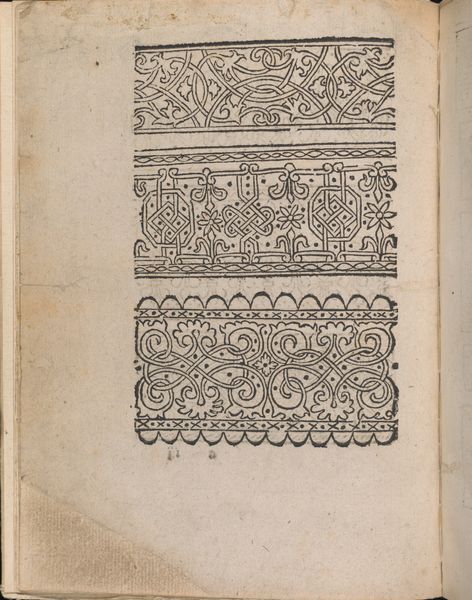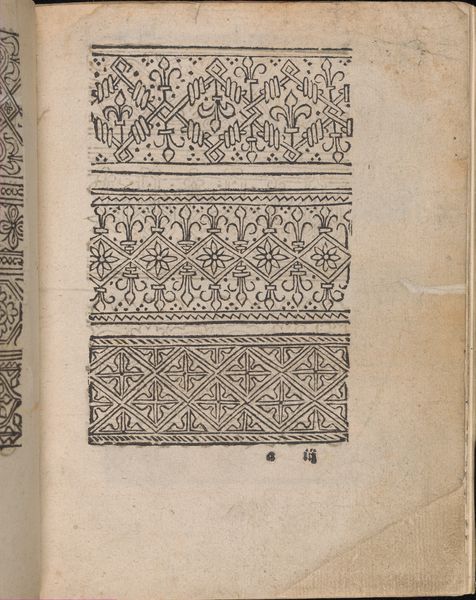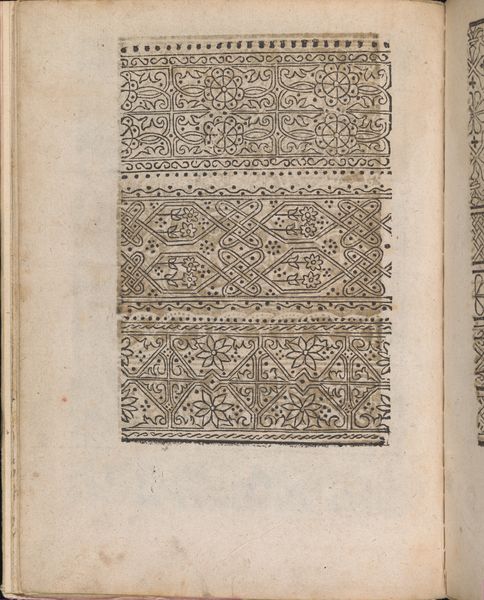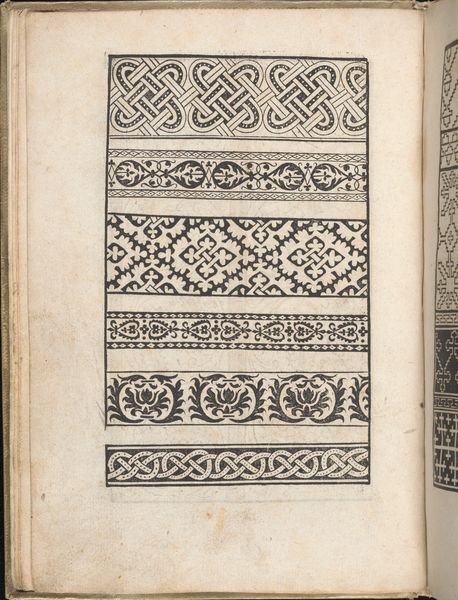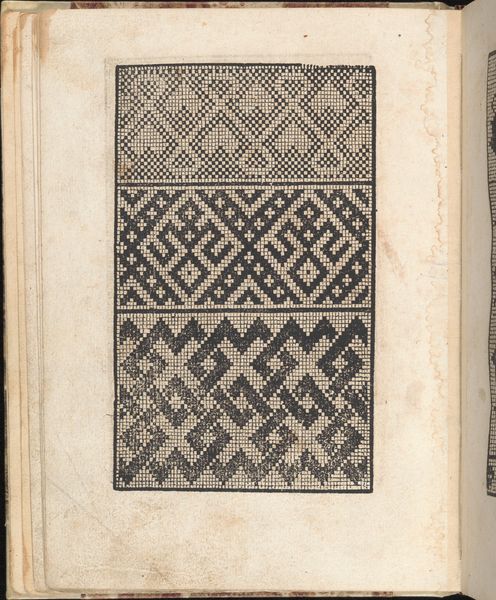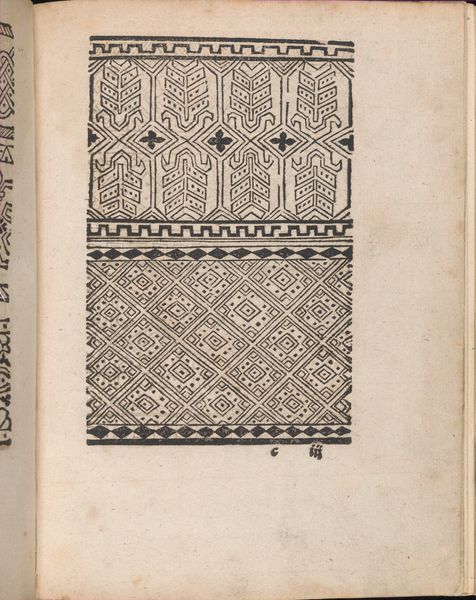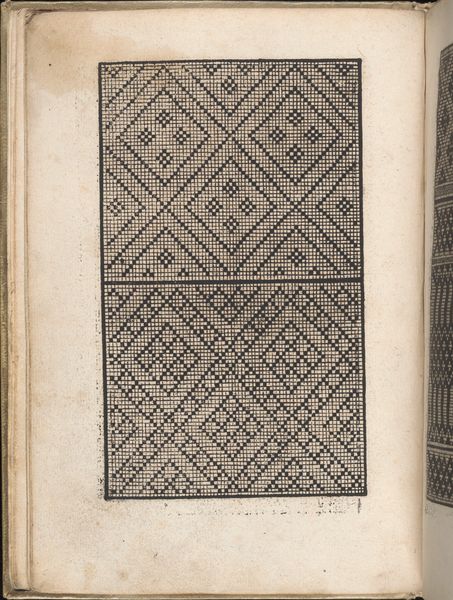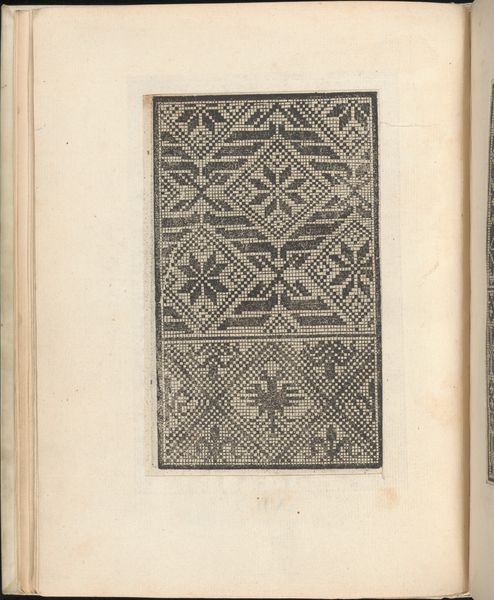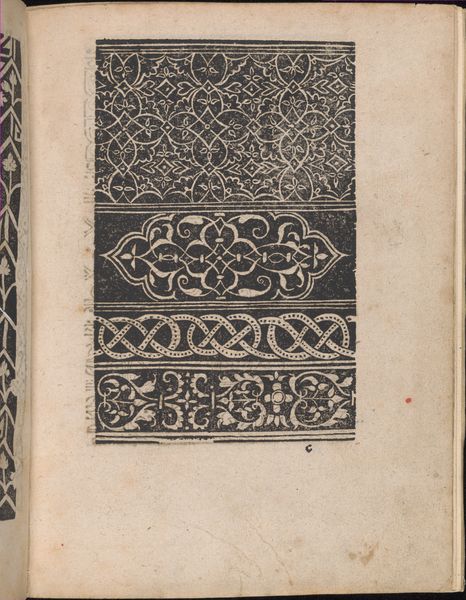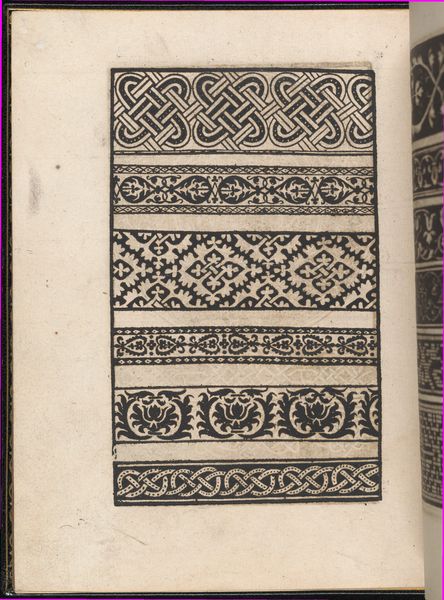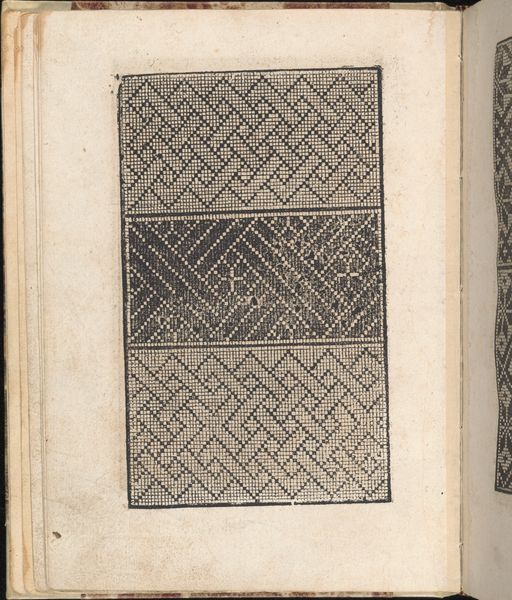
Modelbuch aller Art Nehens vn Stickens (Page 10r) 1535
0:00
0:00
drawing, print, woodblock-print, woodcut
#
drawing
# print
#
book
#
11_renaissance
#
woodblock-print
#
geometric
#
woodcut
#
line
#
northern-renaissance
#
decorative-art
Dimensions: Overall: 7 5/16 x 5 5/16 in. (18.5 x 13.5 cm)
Copyright: Public Domain
Curator: This page comes from the "Modelbuch aller Art Nehens vn Stickens," or "Model Book of All Sorts of Sewing and Stitching," a woodcut print by Christian Egenolff created around 1535. It’s held here at the Metropolitan Museum of Art. Editor: My first impression is how ordered and meticulously linear it is. The repetitive patterns are soothing but also create a complex visual rhythm. Curator: Precisely! The linear quality, achieved through the woodcut technique, is paramount. Observe the interplay between positive and negative space—the black lines articulate the forms, while the unprinted areas define the overall pattern. The horizontal registers emphasize a structured, almost architectural design. Editor: Looking at the imagery, it's striking how timeless some of these symbols feel. The floral motifs, for instance, are fairly universal, suggesting themes of growth and beauty. But then you have these geometric knot patterns. Is there something deeper at play there? Curator: Absolutely. The patterns operate as signs deeply embedded in the cultural context. The knots can be interpreted as symbols of connection, perhaps representing social bonds or even spiritual intertwining, popular throughout Northern Renaissance art and decorative design. And, the cross symbol woven within many patterns serves as an identifier for this as a Christian society. Editor: It's interesting how practical and symbolic considerations seem so interwoven here. This wasn't just about aesthetics; it was about providing templates for a practical skill, one imbued with cultural significance. Curator: Indeed. This page exemplifies the function of pattern books during the Renaissance: disseminating design ideas that simultaneously held aesthetic value and symbolic weight. They allowed for the standardization and transmission of visual language across various crafts and social classes. Editor: It truly does bring into focus how seemingly simple patterns can carry so much history. After this discussion, it's much more than decoration. It's like looking at the threads of a society. Curator: A fascinating convergence of form, function, and cultural coding that resonates across time.
Comments
No comments
Be the first to comment and join the conversation on the ultimate creative platform.
